The Importance of Beekeeping in Eco-Friendly Gardens
In today's world, where environmental concerns are at the forefront of our minds, the practice of beekeeping has emerged as a beacon of hope for our ecosystems. Not only do bees play a crucial role in the pollination of plants, but they also significantly contribute to the health and productivity of eco-friendly gardens. Imagine a garden bursting with vibrant flowers, juicy fruits, and crunchy vegetables; this vision is made possible largely due to the diligent work of bees. By promoting biodiversity and supporting sustainable gardening practices, beekeeping serves as a vital link in the chain of our food systems.
As we delve into the intricate relationship between beekeeping and eco-friendly gardening, it becomes clear that bees are not just insects; they are essential partners in our quest for a greener planet. Their tireless efforts in pollination lead to increased yields of fruits and vegetables, ensuring that our gardens thrive and our plates are filled with nutritious food. The symbiotic relationship between bees and plants is a testament to nature's design, where each party benefits from the other’s existence. This article will explore how beekeeping can enhance your garden, making it a sanctuary for both you and these incredible pollinators.
Bees are often referred to as nature’s superheroes, and for good reason! They are responsible for pollinating approximately one-third of the food we consume. This includes not just fruits and vegetables, but also nuts and seeds. When bees visit flowers, they transfer pollen from one bloom to another, facilitating the reproductive process that allows plants to produce seeds and fruit. Without these tiny pollinators, many of our favorite foods would become scarce, leading to a significant impact on food security.
In eco-friendly gardens, the presence of bees can lead to:
- Increased Crop Yields: Pollination by bees can result in larger and more plentiful harvests. Studies have shown that gardens with healthy bee populations produce more fruits and vegetables than those without.
- Enhanced Biodiversity: Bees help maintain diverse plant life, which in turn supports a wider range of wildlife, creating a balanced ecosystem.
- Improved Plant Health: Pollination not only helps with reproduction but also encourages stronger plants that are more resilient to pests and diseases.
Creating a bee-friendly habitat is essential for attracting these beneficial insects to your garden. By selecting the right plants and providing adequate shelter, you can create a haven where bees can thrive. This involves understanding the needs of local bee species and catering to them in your gardening practices.
One of the most effective ways to attract bees is by planting native plants. These plants are adapted to your local environment and are more likely to attract local bee species. Native plants provide the nectar and pollen that bees need for food, and they often bloom at different times throughout the season, ensuring a continuous food supply. For example, consider incorporating plants like:
- Bee balm
- Black-eyed Susans
- Wildflowers
Understanding the flowering times of your plants is crucial for sustaining bee populations. By planning for staggered bloom periods, you can ensure that bees have access to food throughout the growing season. This means selecting early bloomers like crocuses in spring, mid-season flowers like lavender, and late bloomers like asters in the fall. This planning not only benefits the bees but also enhances the visual appeal of your garden.
Just like any other living creature, bees need water to survive. Creating accessible water sources in your garden can significantly support bee populations. Simple solutions like shallow dishes filled with pebbles and water or small bird baths can provide bees with the hydration they need. Remember, it's essential to keep the water shallow to prevent bees from drowning.
Another critical aspect of supporting bee health is minimizing pesticide use. Many pesticides are harmful to bees and can lead to significant declines in their populations. Instead of reaching for chemical solutions, consider alternative pest control methods such as:
- Natural predators
- Companion planting
- Organic pest control solutions
By adopting these practices, you can keep your garden thriving while protecting the vital bee populations that contribute to its success.
For those interested in taking the plunge into beekeeping, starting your own hive can be a rewarding and enriching experience. Not only will you be contributing to local ecosystems, but you’ll also enjoy the sweet rewards of your hard work. Here are some essential tips and resources to help you get started.
Understanding the necessary equipment for beekeeping is vital for success. Some basic tools and materials you will need include:
- Beehive
- Protective clothing
- Smoker
- Hive tool
Investing in quality equipment will make your beekeeping journey smoother and more enjoyable.
Regular monitoring and care are essential for maintaining a healthy bee colony. This includes checking for signs of disease, ensuring that the queen is present, and providing adequate food sources, especially during winter months. Best practices for ensuring the well-being of your bees throughout the seasons include:
- Conducting regular hive inspections
- Keeping hives clean and free of pests
- Providing supplemental feeding when necessary
Q: How can I attract bees to my garden?
A: Planting native flowers, providing water sources, and avoiding pesticides are great ways to attract bees.
Q: Is beekeeping difficult for beginners?
A: While there is a learning curve, with the right resources and community support, beginners can successfully keep bees.
Q: What should I do if I find a bee in my home?
A: If you find a bee indoors, gently guide it outside using a piece of paper or a cup. They are essential for our environment!
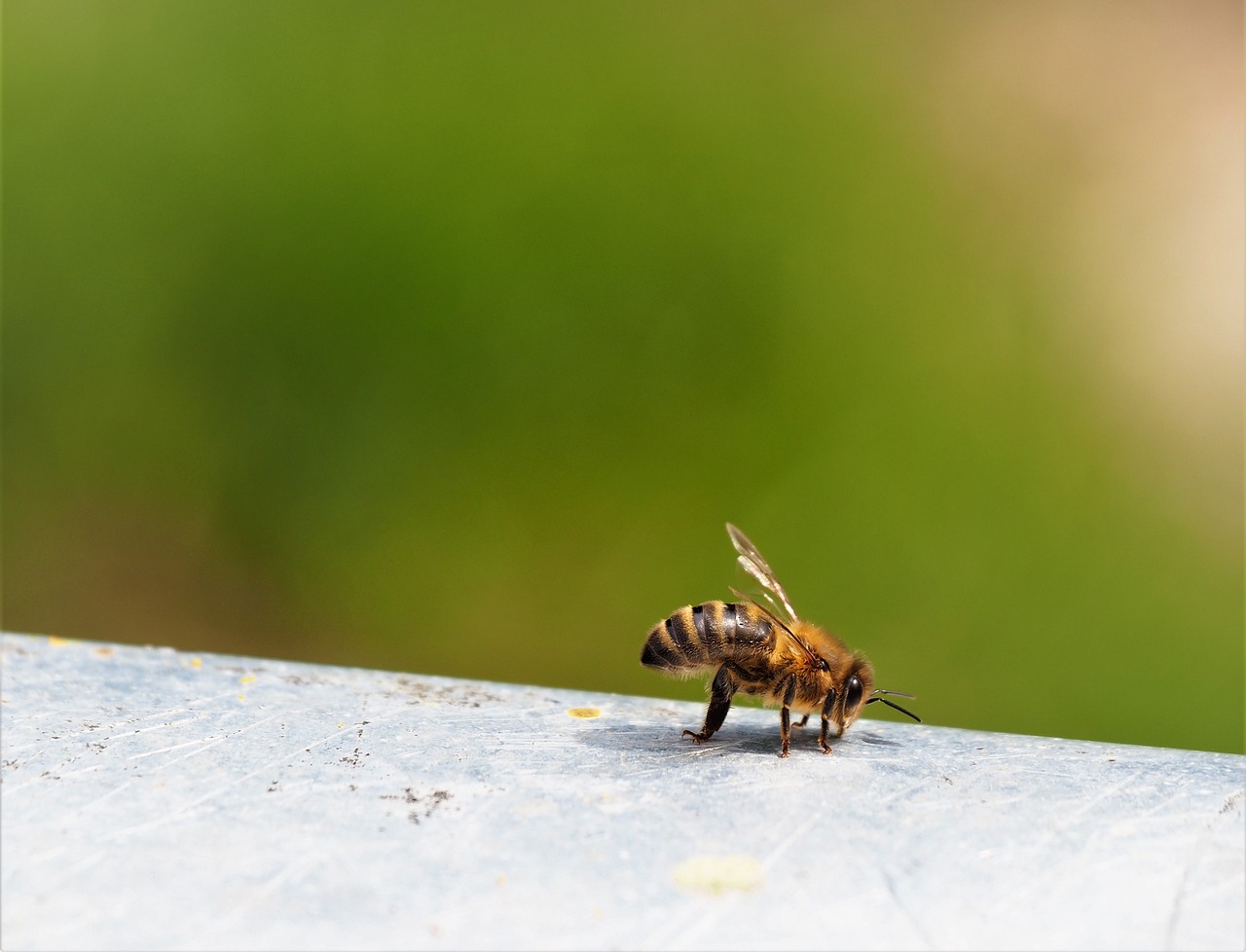
Benefits of Bees for Pollination
Bees are not just buzzing insects; they are the unsung heroes of our gardens and ecosystems. These remarkable creatures play a crucial role in the pollination of a vast array of flowering plants, which is essential for the reproduction of many fruits, vegetables, and nuts. Without bees, the world would face a significant decline in food production, leading to shortages and increased prices. Imagine a summer without ripe strawberries or a fall without crunchy apples—it's a reality we could face if we don't protect our bee populations.
Pollination by bees leads to the production of seeds and fruit, which translates to higher yields for gardeners and farmers alike. In fact, research shows that approximately one-third of the food we consume relies on pollinators like bees. This makes them indispensable not only for biodiversity but also for our food security. When bees visit flowers, they transfer pollen from one bloom to another, facilitating fertilization. This process is not just about quantity; it also enhances the quality of the produce. For instance, fruits that are well-pollinated tend to be larger, juicier, and more flavorful.
Moreover, the presence of bees in your garden can significantly increase the productivity of your plants. Gardens that are buzzing with bee activity often yield:
- Higher fruit and vegetable yields: Studies have shown that gardens with active bee populations can produce up to 50% more fruit than those without.
- Improved plant health: Pollination helps plants produce seeds, which are essential for their lifecycle, ensuring that they thrive year after year.
- Biodiversity enhancement: Bees contribute to a diverse ecosystem by pollinating various species, which supports a wider range of wildlife.
In addition to these direct benefits, having bees in your garden helps create a more balanced ecosystem. When bees pollinate plants, they contribute to the overall health of the environment by supporting other wildlife that depends on those plants for food and habitat. This interconnectedness is vital for maintaining ecological balance.
So, how can you ensure that your garden is a haven for these pollinators? By understanding the benefits that bees bring to pollination, you can take actionable steps to create a bee-friendly environment. Whether it's planting a variety of flowering plants or reducing pesticide use, every little effort counts. Remember, when bees thrive, we all thrive!
- Why are bees important for my garden?
Bees are essential for the pollination of many plants, leading to increased fruit and vegetable yields. - How can I attract more bees to my garden?
Plant a variety of flowering plants, especially native species, and provide water sources. - Are all bees good for pollination?
Yes, while honeybees are the most well-known, many native bee species are also excellent pollinators.
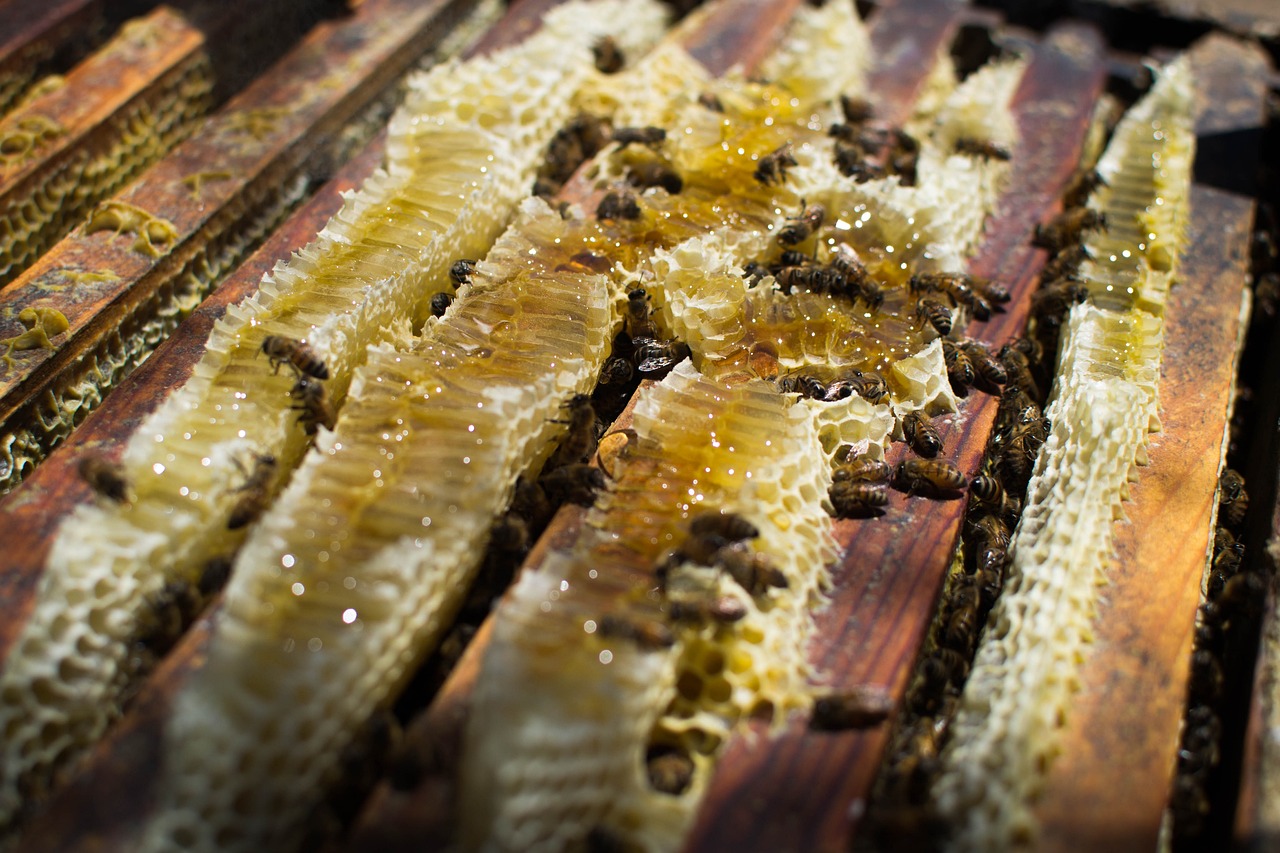
Creating a Bee-Friendly Habitat
Creating a bee-friendly habitat is essential for nurturing our buzzing companions and ensuring they thrive in our gardens. Just think of your garden as a welcoming hotel for bees, where every aspect of the environment is designed to make them feel at home. To achieve this, you need to focus on a few key elements: the right plants, shelter, and water sources. By thoughtfully incorporating these components, you can transform your garden into a vibrant ecosystem that supports bee populations and promotes biodiversity.
First and foremost, selecting the right plants is crucial. Bees are attracted to flowers that provide nectar and pollen, which are their primary food sources. To maximize the appeal of your garden, consider planting a diverse array of flowering plants that bloom at different times throughout the growing season. This ensures a continuous food supply for bees, keeping them happy and healthy. For example, early bloomers like crocuses and snowdrops can provide sustenance in spring, while summer stalwarts like lavender and sunflowers can keep them fed through the hotter months.
Next, let's talk about shelter. Just like humans, bees need a safe place to rest and raise their young. You can create a welcoming environment by including natural elements such as bee hotels, which provide nesting sites for solitary bee species. Additionally, leaving some areas of your garden a bit wild—perhaps with a patch of tall grass or a pile of logs—can offer shelter and nesting opportunities for various bee species. Remember, a little chaos can be a good thing in the world of bees!
Another vital component of a bee-friendly habitat is water. Bees, like all living creatures, need water to survive. You can help by providing accessible water sources in your garden. A shallow birdbath filled with pebbles or a small dish of water can serve as a perfect watering hole for bees. Just ensure that the water is shallow enough for them to land safely without drowning. This small addition can make a significant difference in supporting your local bee population.
In summary, creating a bee-friendly habitat involves a combination of thoughtful plant selection, providing shelter, and ensuring a reliable water source. By taking these steps, you're not just helping bees; you're also contributing to a healthier ecosystem and a more productive garden. Remember, every little bit counts when it comes to supporting our essential pollinators!
- What types of plants should I include in my bee-friendly garden?
Include native flowering plants that provide nectar and pollen, such as lavender, sunflowers, and wildflowers. - How can I create a bee hotel?
You can make a bee hotel using untreated wood, bamboo tubes, or hollow stems to provide nesting sites for solitary bees. - Is it necessary to use pesticides in my garden?
Minimizing pesticide use is crucial for bee health. Consider using natural pest control methods instead.
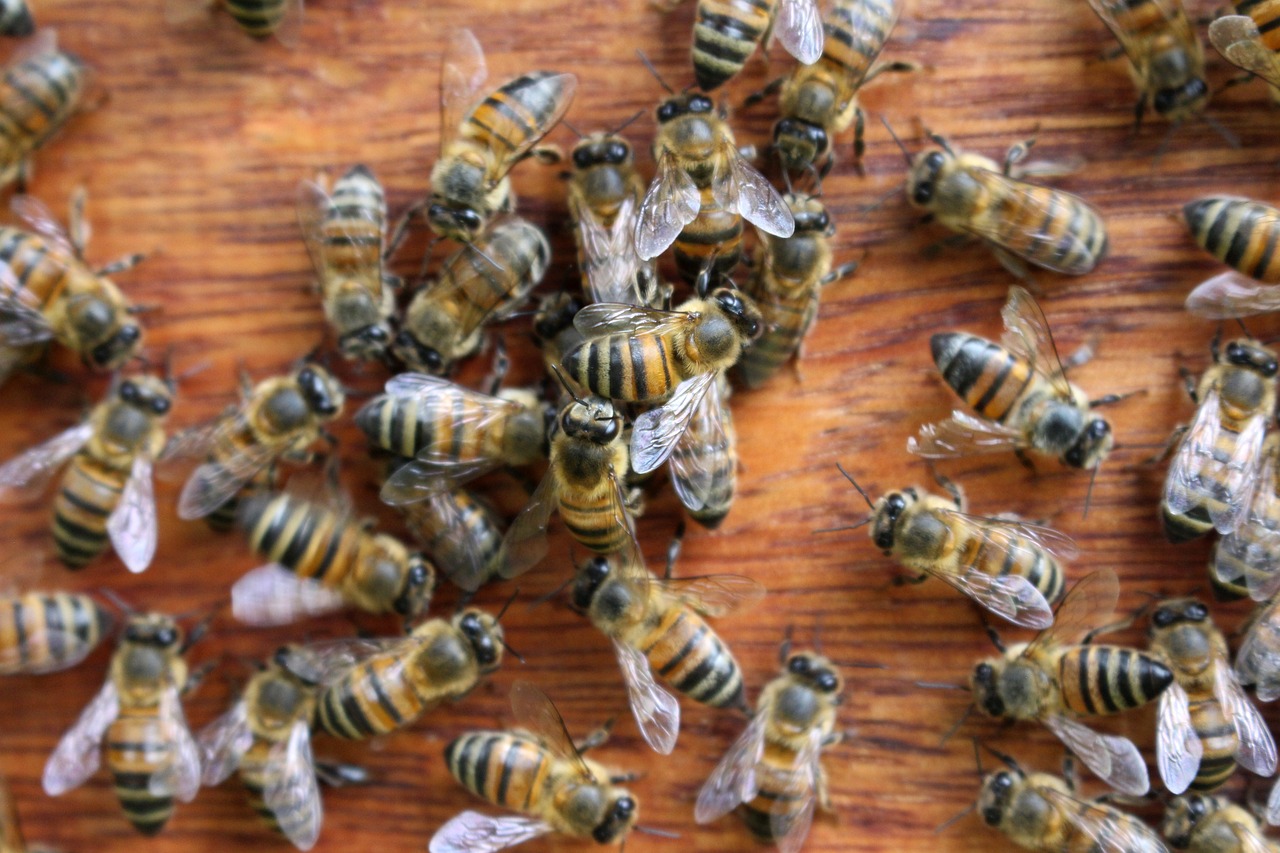
Choosing Native Plants
When it comes to creating a thriving garden that supports bee populations, is one of the most effective strategies you can employ. Native plants are those that naturally occur in your region and have evolved alongside local wildlife, including bees. This means that they are not only well-adapted to the local climate but also provide the specific resources that local bee species need for survival and reproduction. Think of native plants as the ultimate local cuisine for bees—just like you might prefer a home-cooked meal over fast food, bees thrive on the plants that they are naturally accustomed to.
One of the key benefits of planting native species is that they often require less maintenance than non-native varieties. They are typically more resistant to pests and diseases, which means you can spend less time worrying about chemical treatments that could harm your buzzing friends. Instead, you can focus on creating a lush, vibrant space that attracts bees and other pollinators.
Additionally, native plants bloom at different times throughout the season, providing a continuous food source for bees. For instance, early bloomers like purple coneflower and black-eyed Susan can provide sustenance in the spring, while late bloomers like goldenrod keep the food coming into the fall. This staggered blooming is essential for maintaining healthy bee populations, as it ensures that there is always something for them to feast on.
To make informed choices, consider creating a table of local native plants that are especially beneficial for bees. This table can serve as a quick reference guide:
| Plant Name | Bloom Time | Bee Attraction Level |
|---|---|---|
| Purple Coneflower | June - August | High |
| Black-eyed Susan | June - October | Medium |
| Goldenrod | August - October | High |
| Milkweed | June - August | Very High |
Incorporating these native plants into your garden not only supports local bee populations but also enhances the beauty and biodiversity of your outdoor space. Imagine walking through a garden filled with vibrant colors and the gentle hum of bees hard at work—it's a sight and sound that can bring a smile to anyone's face.
As you plan your garden, remember that diversity is key. The more variety you have, the more likely you are to attract different species of bees, each with its own unique role in the ecosystem. So, don't hesitate to mix things up with a range of native plants that bloom at different times and offer various shapes and sizes of flowers. Your garden will not only be a feast for the eyes but also a sanctuary for our buzzing friends!
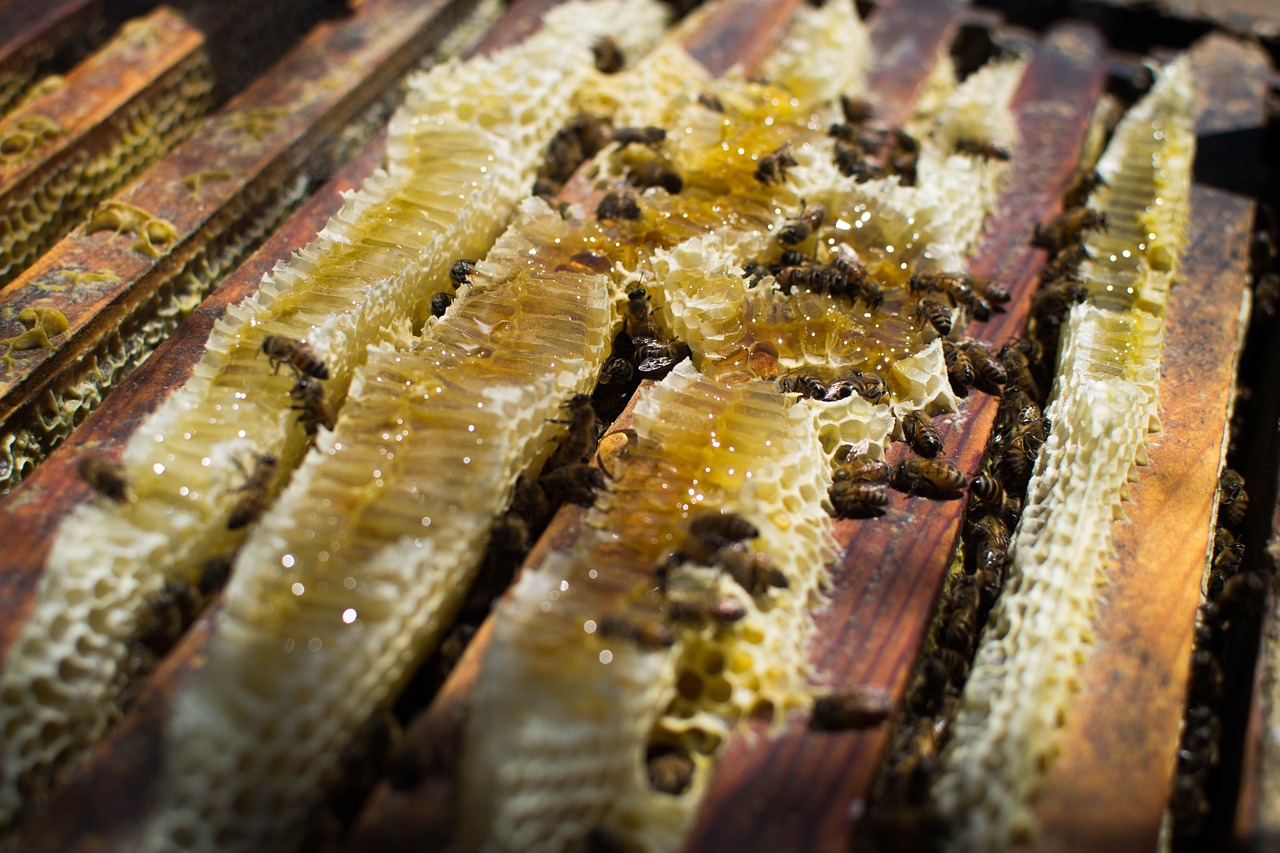
Flowering Times
Understanding the of plants is crucial for creating a thriving garden that supports our buzzing friends, the bees. Just like how we enjoy a buffet with a variety of dishes, bees thrive when there is a continuous supply of flowers blooming throughout the growing season. If we want to ensure that bees have enough food, we need to plan our gardens like a well-orchestrated symphony, where each plant plays its part at just the right moment.
When selecting plants, consider their blooming periods. Some flowers bloom in early spring, while others may not show their colors until late summer or fall. By staggering the flowering times of your plants, you can create a buffet that lasts from the first warm days of spring until the cool breezes of autumn. This not only supports bee populations but also enhances the overall beauty of your garden.
Here’s a simple breakdown of flowering times that can help you plan your garden:
| Season | Examples of Flowering Plants |
|---|---|
| Early Spring | Snowdrops, Crocus, Daffodils |
| Late Spring | Bluebells, Lilacs, Peonies |
| Summer | Lavender, Sunflowers, Coneflowers |
| Fall | Asters, Sedum, Goldenrod |
By incorporating a variety of plants that bloom at different times, you not only provide a steady food source for bees but also create a vibrant tapestry of colors in your garden. Additionally, pay attention to the length of the blooming period for each plant. Some flowers may bloom for just a few weeks, while others can last for months. This diversity ensures that there is always something for the bees to enjoy.
In summary, planning for staggered bloom periods is like setting up a bee buffet that runs all season long. By selecting plants that flower at different times, you can support bee populations effectively and create a garden that is not only eco-friendly but also visually stunning. Remember, a garden that is friendly to bees is a garden that is thriving!
- How can I find out when my plants will bloom?
Check local gardening resources or plant tags for information on blooming periods. - What are some good plants to attract bees?
Consider native plants, such as lavender, sunflowers, and asters, as they are more attractive to local bee species. - How can I ensure my garden is bee-friendly?
In addition to flowering times, reduce pesticide use and provide water sources to create a welcoming habitat for bees.
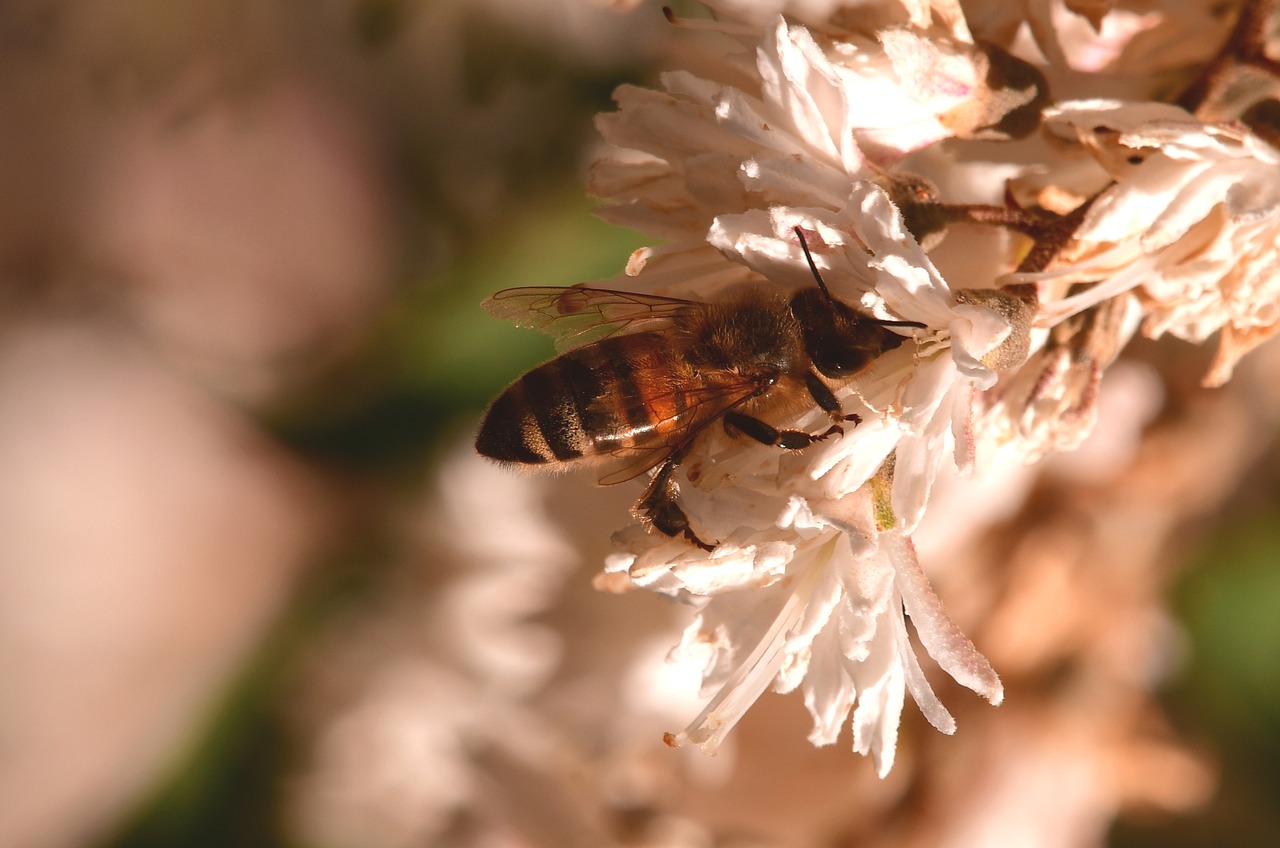
Providing Water Sources
Water is a vital resource not just for humans but also for our buzzing friends—the bees! Just like we need a refreshing drink after a long day, bees require water to survive and thrive. In fact, providing accessible water sources in your garden can make a world of difference in attracting and sustaining bee populations. Imagine your garden buzzing with life, all thanks to a simple water feature!
When considering how to provide water for bees, think about creating small, shallow dishes filled with water. You can use birdbaths, saucers, or even repurposed containers. The key is to ensure that these water sources are shallow enough for bees to land safely without drowning. To make it even more inviting, add pebbles or marbles to the bottom of the container. This not only gives bees a place to land but also adds a charming aesthetic to your garden.
It’s essential to keep the water clean and fresh. Stagnant water can become a breeding ground for mosquitoes, which is not good for anyone! So, make it a habit to change the water regularly, ensuring that it remains a safe haven for our pollinating pals. You might find that the more effort you put into providing water, the more bees will flock to your garden, creating a vibrant ecosystem.
Additionally, consider the placement of your water sources. Bees tend to prefer sunny spots, as they help them warm up and become more active. So, choose a location that receives ample sunlight while being sheltered from strong winds. This will not only make it easier for bees to access the water but also create a welcoming environment for them to visit.
In summary, providing water sources is a simple yet effective way to support bee populations in your eco-friendly garden. By ensuring that your water features are shallow, clean, and strategically placed, you can create a thriving habitat that benefits both bees and your garden’s overall health. So, roll up your sleeves and get ready to make a splash—your buzzing buddies will thank you for it!
- Why do bees need water? Bees need water for hydration, temperature regulation, and to dilute honey for feeding their larvae.
- What type of water source is best for bees? Shallow containers filled with clean water are ideal. Adding stones or pebbles can help bees land safely.
- How often should I change the water? It’s best to change the water every few days to prevent stagnation and mosquito breeding.
- Can I use a birdbath for bees? Yes! Just ensure it has shallow areas and is kept clean for the safety of the bees.
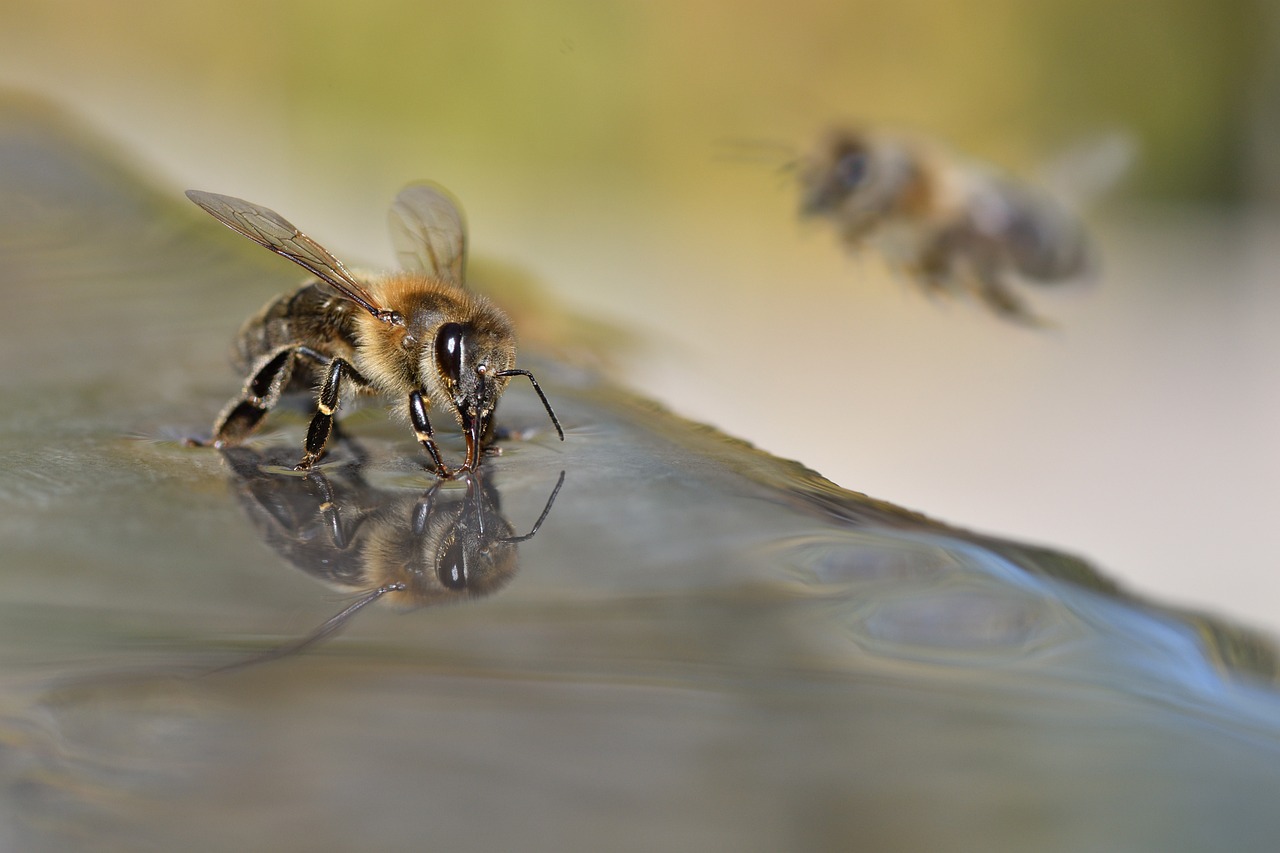
Reducing Pesticide Use
When it comes to maintaining a healthy garden, one of the most significant steps you can take is . Pesticides, while effective at keeping pests at bay, can have devastating effects on bee populations and other beneficial insects. These tiny pollinators are crucial for the health of our ecosystems, and their decline can lead to a ripple effect throughout the food chain. So, how can you protect your precious bees while still keeping your garden thriving?
First off, it's essential to understand that not all pests are harmful. In fact, many insects play a vital role in maintaining the balance of your garden. Instead of reaching for that bottle of pesticide at the first sign of trouble, consider implementing natural pest control methods. For instance, encouraging the presence of predatory insects, such as ladybugs and lacewings, can help keep pest populations in check without harming your bees.
Another effective strategy is to use companion planting. This involves planting certain crops in close proximity to enhance growth and deter pests naturally. For example, planting marigolds alongside your vegetables can help repel aphids, while also attracting beneficial insects. This not only reduces the need for chemical interventions but also creates a more vibrant and diverse garden ecosystem.
Additionally, timing is everything when it comes to applying any necessary treatments. If you must use pesticides, consider doing so in the late evening or early morning when bees are less active. This simple adjustment can significantly reduce the risk of harming these essential pollinators. Always opt for organic or bee-friendly products whenever possible, as these are designed to minimize harm to beneficial insects.
Lastly, it’s worth mentioning the importance of educating yourself and others about the impact of pesticides. By spreading awareness, you can inspire your community to adopt more sustainable gardening practices. Consider hosting workshops or sharing resources on social media to encourage others to join the movement towards a more eco-friendly approach.
In conclusion, reducing pesticide use is not merely a personal choice; it’s a crucial step in fostering a healthier environment for bees and other wildlife. By embracing natural pest control methods, practicing companion planting, and being mindful of application timing, you can create a thriving garden that supports local ecosystems while enjoying the beauty and bounty of nature.
- What are the best natural pest control methods? Natural pest control methods include introducing beneficial insects, using traps, and applying organic solutions like neem oil.
- How can I attract more bees to my garden? Planting a variety of native flowering plants, providing water sources, and avoiding pesticides can significantly attract more bees.
- Is it safe to use any pesticides around bees? While some pesticides are labeled as bee-friendly, it's always best to use them sparingly and during times when bees are less active.
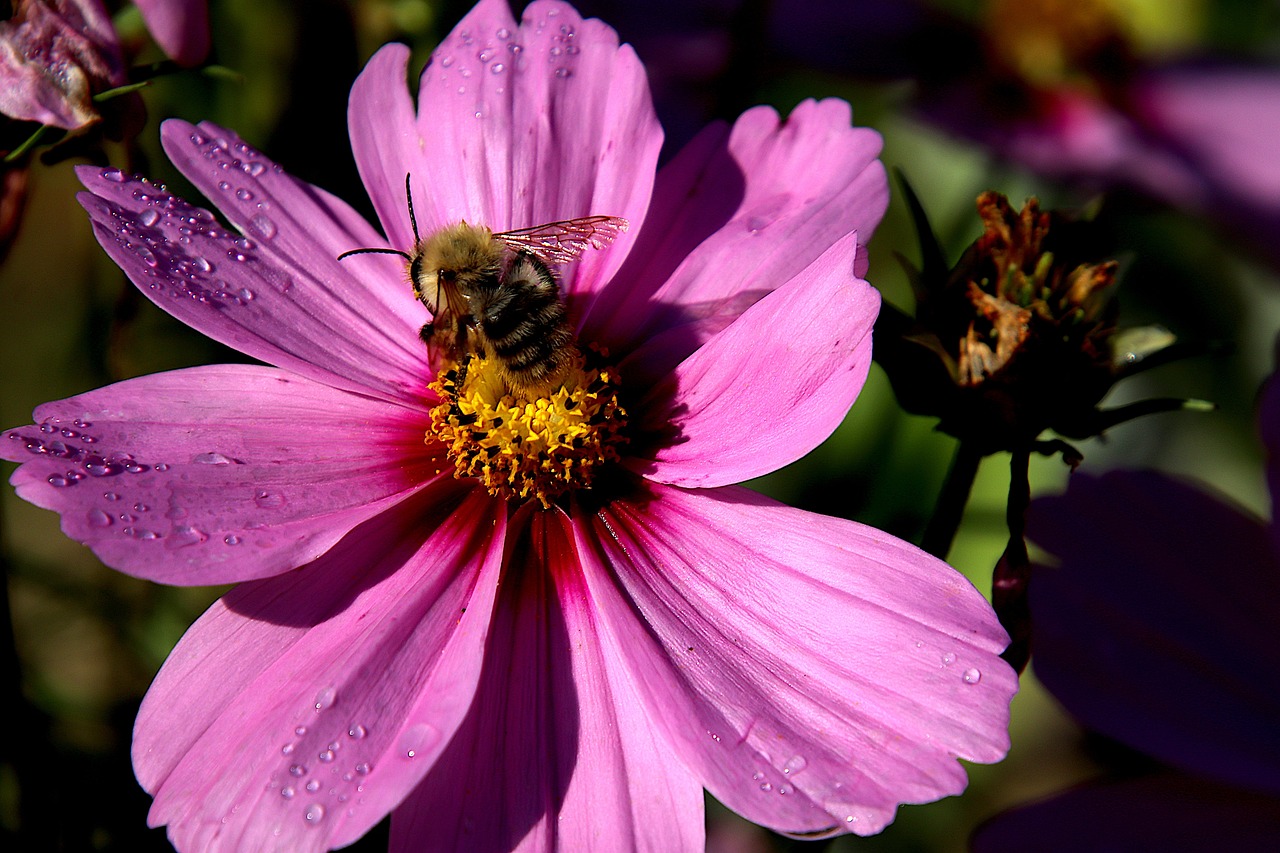
Beekeeping Practices for Beginners
Starting your beekeeping journey can feel like stepping into a whole new world, one buzzing with life and potential. It's not just about honey; it's about fostering a thriving ecosystem right in your backyard. If you’ve ever wondered how to get started with beekeeping, you’re in the right place! Before diving in, it’s essential to understand the basics and equip yourself with the right knowledge and tools. Think of beekeeping as nurturing a small community where every bee plays a vital role. Just like in any community, you need to ensure that the environment is supportive and healthy.
First and foremost, getting the right beekeeping equipment is crucial. You don’t need to break the bank, but investing in quality gear will set you up for success. Here’s a quick rundown of the essential items you’ll need:
| Equipment | Purpose |
|---|---|
| Bee Suit | Protects you from bee stings while you work with the hive. |
| Hive Tool | Helps in opening the hive and inspecting frames. |
| Smoker | Calms bees during hive inspections, making the process smoother. |
| Bee Feeder | Provides food for bees, especially during nectar dearth. |
Once you have your equipment ready, the next step is to choose the right location for your hive. Ideally, you want a sunny spot with some shade during the hottest parts of the day. Bees prefer to be near a water source, so consider placing your hive close to a birdbath or pond. This not only makes it easier for the bees to hydrate but also provides them with a natural environment to thrive.
Another essential aspect of beekeeping is maintaining bee health. Regular monitoring is key to spotting any issues before they escalate. This means checking for signs of disease or pests, such as Varroa mites, which can devastate a colony if left unchecked. Keeping a journal of your inspections can help you track the health of your hive over time. Remember, a healthy hive is a productive hive!
As you embark on this exciting journey, don't hesitate to reach out to local beekeeping clubs or online forums. These communities are filled with experienced beekeepers who are eager to share their knowledge and tips. They can provide invaluable support and guidance as you learn the ropes. Think of it like joining a family where everyone shares a common passion for bees!
Lastly, don’t be discouraged by initial challenges. Every beekeeper faces hurdles, whether it’s a rogue bear trying to raid the hive or a sudden change in weather affecting bee behavior. The key is to stay patient and persistent. With every challenge comes an opportunity to learn and grow. Remember, beekeeping is not just a hobby; it’s a way to connect with nature and contribute positively to the environment.
- How much time do I need to dedicate to beekeeping? Most beginners spend a few hours a week during the active season, but this can vary based on hive conditions and personal goals.
- Is beekeeping expensive? While there are initial costs for equipment and bees, many find the investment worthwhile due to the numerous benefits and potential honey harvests.
- Can I keep bees in my backyard? Yes, as long as you comply with local regulations regarding beekeeping and ensure your bees won’t disturb neighbors.
- What should I do in winter? Beekeeping doesn’t stop in winter! You’ll need to ensure your hive is well-prepared for the cold months, including reducing entrances and providing sufficient food.
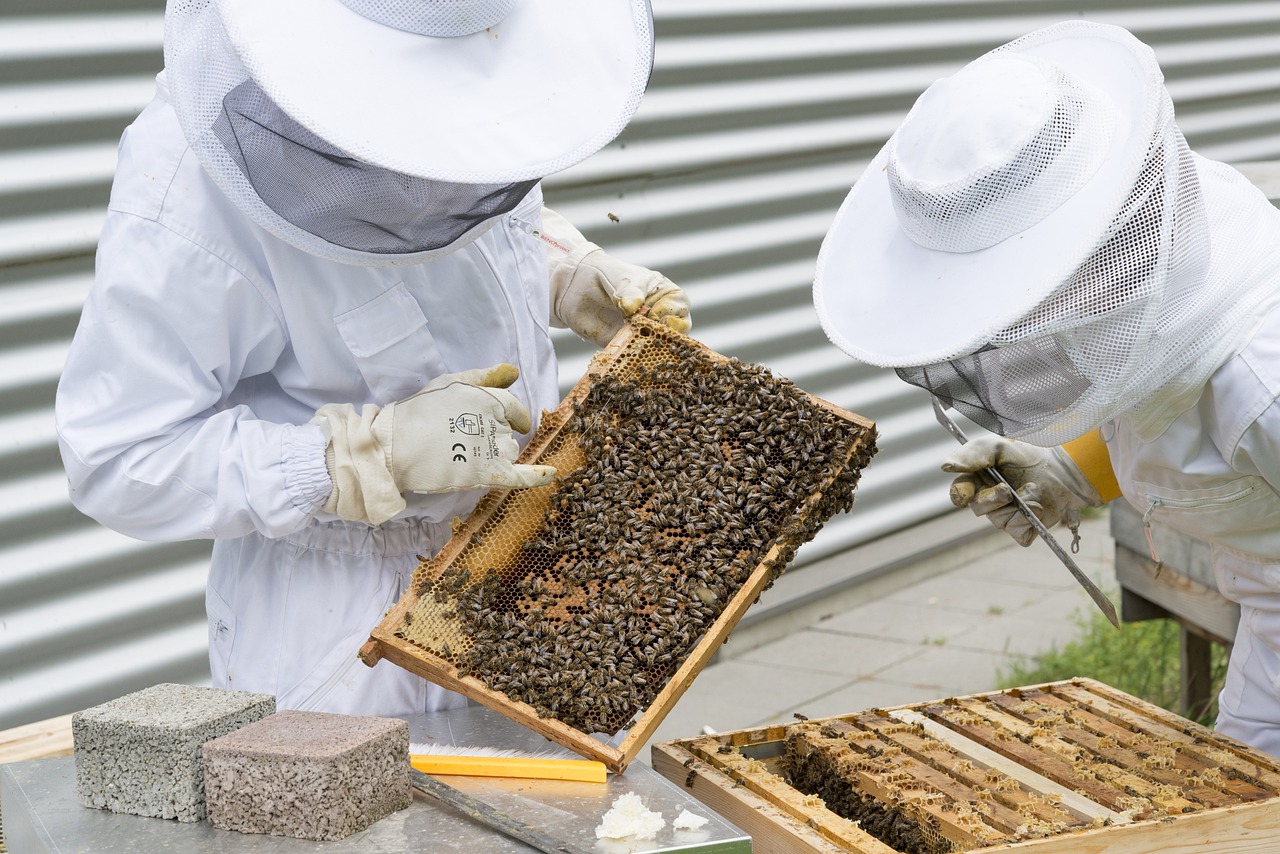
Essential Beekeeping Equipment
Starting your beekeeping journey is like embarking on an exciting adventure, and just like any great explorer, you need the right tools to ensure success. The essential beekeeping equipment serves as your trusty companions, helping you manage your hive and maintain the health of your buzzing friends. First and foremost, you’ll need a good bee suit. This protective gear is crucial for keeping you safe from stings while you work with your bees. Imagine trying to navigate a bustling city without a map; that’s how it feels to approach a hive without the right protection!
Next on the list is a beekeeper's veil, which protects your face and neck from curious bees. Pair it with a pair of gloves to shield your hands from any unexpected encounters. While bees are generally docile, they can become defensive if they feel threatened. Think of your protective gear as a superhero costume; it gives you the confidence to handle your bees with care!
Another vital piece of equipment is the smoker. This tool is used to calm the bees when you open the hive. The smoke masks alarm pheromones that bees release when they feel threatened, allowing you to inspect the hive more safely. It’s like giving your bees a gentle hug, reassuring them that everything is okay. You’ll also need a hive tool, which is essential for prying apart frames and scraping off excess wax. This tool is your beekeeping Swiss army knife, making many tasks easier.
As you dive deeper into the world of beekeeping, consider investing in a honey extractor if you plan to harvest honey. This equipment allows you to extract honey from the comb without destroying it, ensuring that your bees can continue to thrive. It’s like having your cake and eating it too—enjoying the sweet rewards of your labor while keeping your bees happy!
Lastly, don’t forget about supers, which are additional boxes added to the hive to provide more space for honey storage. They are essential for any beekeeper looking to increase honey production. Picture them as the extra storage in your attic; they allow you to keep all your treasures safe and sound!
In summary, here’s a quick overview of the essential beekeeping equipment:
| Equipment | Purpose |
|---|---|
| Bee Suit | Protects you from stings |
| Bee Veil | Protects your face and neck |
| Gloves | Shields your hands from stings |
| Smoker | Calms bees during inspections |
| Hive Tool | Used for prying frames and scraping |
| Honey Extractor | Extracts honey without damaging comb |
| Supers | Provides additional honey storage space |
With the right equipment in hand, you’re well on your way to becoming a successful beekeeper. Remember, each tool has its purpose, and understanding how to use them effectively will make your beekeeping experience not only productive but also enjoyable. So gear up, and let’s get buzzing!
- What is the best time to start beekeeping? The best time to start beekeeping is in the spring when flowers are blooming, and bees are actively foraging.
- Do I need a lot of space to keep bees? No, you don’t need a large space. A small backyard can accommodate a hive or two.
- Is beekeeping expensive? Initial costs can be high due to equipment, but it can be a rewarding investment over time.
- How often should I check my hive? Regular checks every 7-10 days during the active season are recommended.
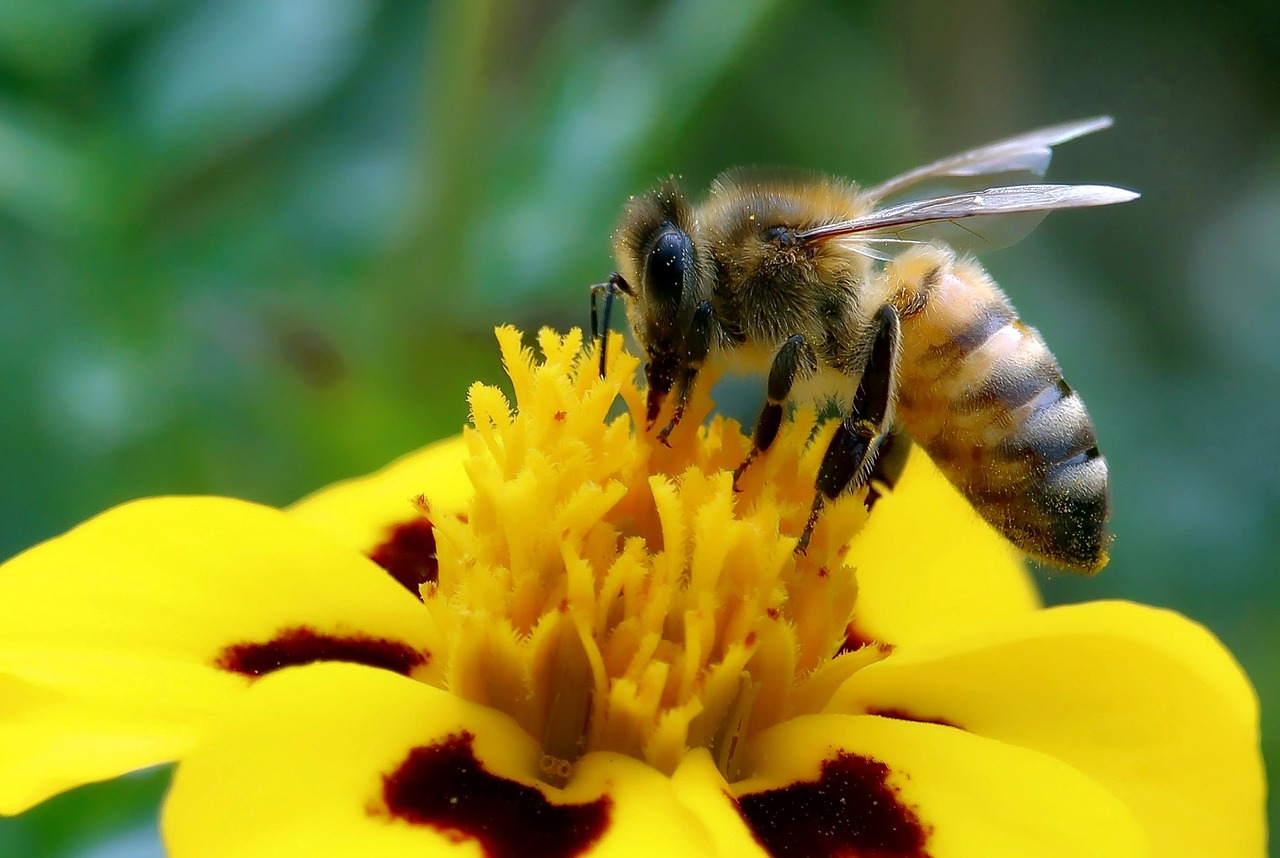
Maintaining Bee Health
Maintaining the health of your bee colony is not just a responsibility; it’s a commitment to nurturing a vital part of our ecosystem. Just like any living creature, bees require regular care and attention to thrive. One of the first steps in ensuring their well-being is monitoring their environment. This includes checking for signs of disease, pests, and overall colony strength. A healthy hive is bustling with activity, but if you notice a decline in activity, it might be time to investigate further.
Regular inspections are essential. During these visits, you should look for several key indicators of bee health:
- Population Size: A thriving colony should have a robust population. If you notice a significant drop, it could indicate underlying issues.
- Brood Pattern: Healthy brood (the eggs and larvae) should be present. An irregular pattern can signal problems.
- Presence of Pests: Look for common pests like Varroa mites, which can devastate colonies if left unchecked.
Moreover, nutrition plays a crucial role in bee health. Bees require a balanced diet consisting of nectar and pollen. You can support their nutrition by planting a variety of flowering plants that bloom at different times throughout the season. This approach not only provides food but also encourages biodiversity in your garden. Remember, a well-fed bee is a happy bee!
Another important aspect of maintaining bee health is managing their stress levels. Stress can arise from various factors, including environmental changes, lack of food, or even aggressive hive management practices. To minimize stress, ensure that your hive is located in a calm area, away from loud noises and disturbances. Additionally, avoid over-managing your hive, as frequent disruptions can lead to anxiety among the bees.
Lastly, consider the importance of seasonal preparation. As seasons change, so do the needs of your bees. In the fall, for instance, it’s crucial to ensure that your bees have enough food stores to survive the winter months. You may need to supplement their diet with sugar syrup or pollen patties if natural resources are scarce. By preparing your bees for seasonal changes, you can help them remain healthy and productive all year round.
Q: How often should I inspect my bee hive?
A: It’s recommended to inspect your hive every 7-10 days during the active season. This allows you to monitor their health and address any issues promptly.
Q: What are the signs of a sick bee colony?
A: Look for a decrease in bee activity, irregular brood patterns, or the presence of dead bees at the hive entrance. These can be indicators of illness or distress.
Q: Can I use sugar water to feed my bees?
A: Yes, sugar water can be used as a temporary food source, especially in early spring or late fall when natural food sources are limited. However, make sure to provide it in moderation.
Q: How do I prevent pests from harming my bees?
A: Regular inspections and maintaining good hygiene in your beekeeping practices can help prevent infestations. Additionally, consider using natural pest control methods rather than chemical ones.
Frequently Asked Questions
- Why are bees important for eco-friendly gardens?
Bees play a crucial role in pollination, which is essential for the reproduction of many flowering plants. Their activities lead to increased yields of fruits and vegetables, making gardens not just beautiful but also productive and sustainable.
- How can I create a bee-friendly habitat in my garden?
To create a bee-friendly habitat, consider planting native flowers that bloom at different times throughout the growing season. Additionally, provide shelter such as bee hotels and ensure there are accessible water sources to support these vital pollinators.
- What types of plants should I choose to attract bees?
Choosing native plants is key! These plants are more likely to attract local bee species. Look for flowers that are rich in nectar and pollen, and try to include a variety of shapes and colors to cater to different bee species.
- How can I minimize pesticide use in my garden?
Reducing pesticide use is essential for protecting bee health. Consider using natural pest control methods, such as introducing beneficial insects, using organic pesticides, or employing companion planting techniques to keep pests at bay without harming bees.
- What equipment do I need to start beekeeping?
Essential beekeeping equipment includes a beehive, protective clothing, a smoker, and basic tools like a hive tool and bee brush. These items will help you manage your bee colony effectively and safely.
- How can I maintain the health of my bee colony?
Maintaining bee health involves regular monitoring of the hive, checking for signs of disease or pests, and ensuring that the bees have enough food and water. It’s also important to manage the hive space to prevent overcrowding.


















